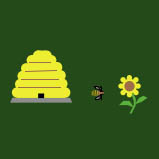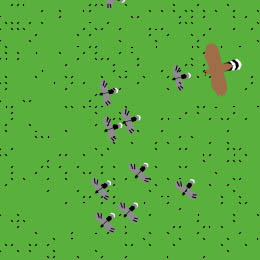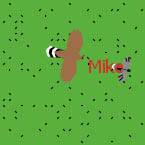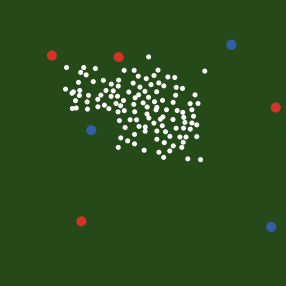
Behavioral Ecology
 |
Bee Foraging This model simulates foraging behavior of honeybees. It is designed to illustrate Charnov's (1976) Marginal Value Theorem, which predicts how long an animal should forage in a given patch. The user can modify environmental conditions, and the time-per-flower for two different bees. The model reports total nectar collected and the rate of nectar collection. |
 |
Vigilance Behavior (Collective) Many animals are at risk of being eaten by other animals. Typically, foraging requires focused attention that reduces an animal's ability to detect predators. Such an animal must balance food intake with predation risk. This model simulates Pulliam's (1973) vigilance model which suggests that an advantage to birds of feeding in flocks is that there are multiple eyes eyes watching for predators. A flock of juncos forages on a patch of grass, and can be attacked by a cooper's hawk. The rate and duration of foraging bouts can be adjusted. |
 |
Vigilance Behavior (Individual) This model is like the one above, except that parameters for individual birds can be adjusted. Students can 'play' their own birds, and label them with their names. This way game theory can be introduced, and illustrate that the best strategy for the group is prone to 'cheating' by individuals. |
 |
Foraging As the name suggests, this model simulates the foraging behavior of two predator species. Predators forage and gain energy from prey while using energy to move. The model tracks the mean and standard deviation in energy for each species. Prey can be clumped, uniformly, or randomly distributed, and can be static, slow or fast moving. Each predator can have two foraging strategies based on energy levels. Their foraging parameters include: their movement likelihood, speed, and directional shifts. The predator's threshold for shifting strategies is also adjustable. |